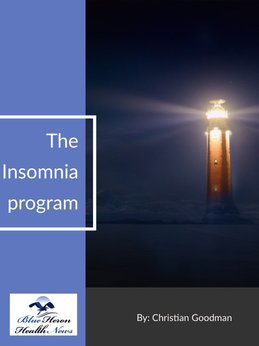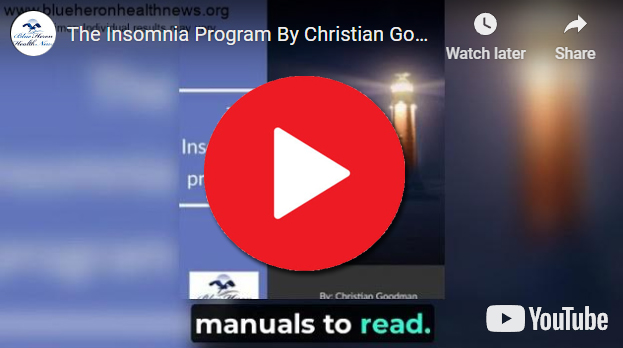
The Insomnia Program™ By Christian Goodman This program has been created by Christian Goodman, a natural health expert and sufferer of insomnia. He has used an audio program to let your fall sleep with the help of a bit of a hypnotic effect on your body.
How often should individuals at risk be screened for insomnia?
Screening for insomnia is essential, especially for individuals at higher risk. Early identification allows for timely interventions that can prevent the development of chronic insomnia or its associated complications. The frequency of screening depends on several factors, including individual risk factors, the presence of symptoms, and any underlying health conditions. Here’s an outline of screening recommendations:
1. General Population (Adults):
- Initial Screening: For adults with suspected sleep difficulties or complaints (e.g., difficulty falling asleep, staying asleep, or waking up too early), a screening should be conducted as part of a routine health assessment. This could be during annual physical exams or whenever individuals report sleep problems.
- Follow-up Screening: If initial screening reveals insomnia symptoms, follow-up assessments should occur every 6-12 months to monitor progress, especially if the individual has started treatment or has been referred for behavioral therapy (e.g., cognitive behavioral therapy for insomnia, CBT-I).
2. High-Risk Populations:
Individuals who are at higher risk for developing insomnia should be screened more frequently. These groups include:
- Older Adults:
- Aging increases the risk of insomnia due to changes in sleep architecture and the presence of chronic health conditions.
- Frequency: Older adults should be screened annually or more often if they report sleep disturbances or have comorbid conditions that affect sleep (e.g., arthritis, depression, or dementia).
- People with Mental Health Conditions:
- Conditions like depression, anxiety, bipolar disorder, and post-traumatic stress disorder (PTSD) are strongly associated with insomnia.
- Frequency: Individuals with mental health conditions should be screened regularly—at least annually—or more frequently if symptoms of insomnia are reported or if there is a change in treatment (e.g., starting a new medication).
- Chronic Pain Patients:
- Those suffering from chronic pain (e.g., due to arthritis, fibromyalgia, back pain, or headaches) are at increased risk of insomnia.
- Frequency: Screening should be done annually or more often if pain management treatments change or if insomnia symptoms become more noticeable.
- People with Cardiovascular or Respiratory Conditions:
- Conditions such as heart disease, hypertension, sleep apnea, and diabetes can interfere with sleep and increase the risk of insomnia.
- Frequency: People with these conditions should be screened at least annually. If sleep disturbances are reported, more frequent screening may be necessary.
- Shift Workers or Individuals with Irregular Sleep Patterns:
- Shift work or irregular sleep patterns can disrupt circadian rhythms and contribute to insomnia.
- Frequency: Screening should be done regularly, especially if individuals report trouble sleeping or if sleep issues affect daily functioning.
- Women (Especially During Pregnancy or Perimenopause):
- Hormonal changes during pregnancy or menopause can disrupt sleep patterns and lead to insomnia.
- Frequency: Pregnant women should be screened as part of prenatal care visits, and women in perimenopause or menopause should be screened annually or more often if they experience significant sleep disturbances.
3. Individuals Using Sleep-Disrupting Medications:
- Medications such as antidepressants, antihistamines, corticosteroids, and beta-blockers can interfere with sleep.
- Frequency: Individuals on these medications should be screened annually, especially if they report sleep problems. If medications change or side effects emerge, screening should occur more frequently.
4. Individuals with Family History of Sleep Disorders:
- A family history of sleep disorders like insomnia, sleep apnea, or restless leg syndrome can increase an individual’s risk.
- Frequency: These individuals should be screened more frequently—at least once a year—if they report symptoms or have other risk factors.
5. People Undergoing Stressful Life Events:
- Major life changes (e.g., loss of a loved one, job loss, divorce) or chronic stress can lead to sleep disturbances.
- Frequency: Screening should be conducted during stressful events and may be more frequent (every 3-6 months) if sleep issues persist.
6. Screening Tools:
- Screening for insomnia typically involves using standardized tools such as:
- Insomnia Severity Index (ISI): A brief self-report questionnaire that assesses the severity of insomnia symptoms.
- Sleep Diaries: Used to track sleep patterns over a period of time (usually 1–2 weeks).
- The Epworth Sleepiness Scale: A measure of daytime sleepiness that may suggest the presence of insomnia or other sleep disorders.
- Clinical Interviews: In-depth assessments by a healthcare provider to evaluate the severity, duration, and impact of sleep disturbances.
Conclusion:
The frequency of insomnia screening depends on an individual’s risk factors, symptoms, and overall health. High-risk groups, such as older adults, those with mental health conditions, and individuals with chronic illnesses, should be screened annually or more frequently if they report sleep disturbances. For the general population, an annual screening or a screening upon the presentation of symptoms is typically sufficient. Early screening helps identify insomnia in its initial stages, leading to better management and prevention of long-term complications.

The Insomnia Program™ By Christian Goodman This program has been created by Christian Goodman, a natural health expert and sufferer of insomnia. He has used an audio program to let your fall sleep with the help of a bit of a hypnotic effect on your body.